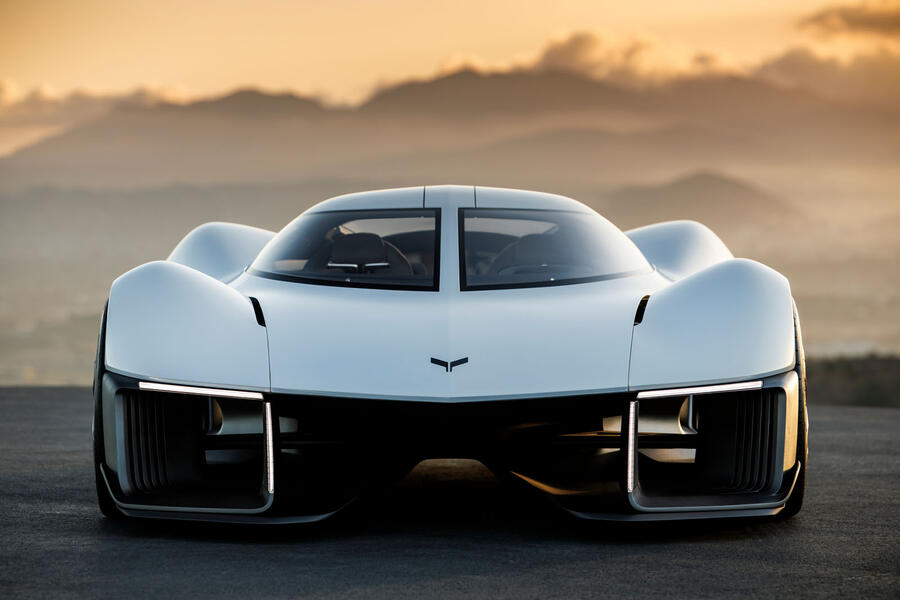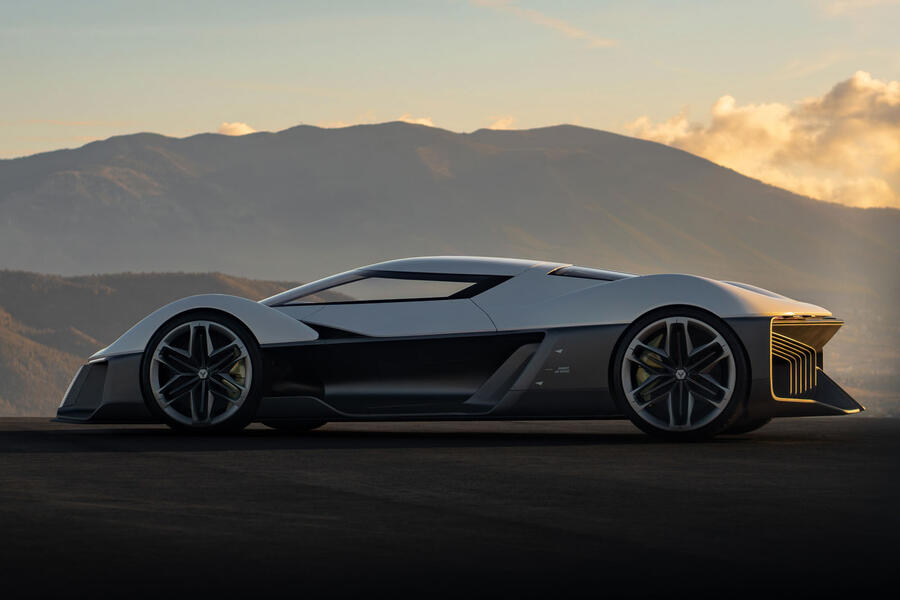Ex-Jaguar designer Julian Thomson leads GM's British design studio in imagining C9 'Vette
General Motors has unveiled a fully finished, future-looking Chevrolet Corvette electric car concept produced entirely in Britain, to underscore the importance of its large and impressive new UK advanced design studio.
The recently opened studio in Leamington Spa is led by Julian Thomson, previously Jaguar’s head of design. Thomson has also worked for other manufacturers including Volkswagen and Lotus and was responsible for the creation of design icons such as the original Lotus Elise and the Range Rover Evoque.
The opening of a new design outpost comes as part of a push by GM to re-establish itself in Europe following a decade-long absence. GM-owned Cadillac’s new Lyriq EV is already available in certain markets in the region and the smaller, Europe-focused Optiq crossover is due to follow in the coming months – and both are due in the UK eventually.
The new Chevrolet concept is the first of three studies from GM studios to be shown this year as part of a global Corvette design project. The UK-designed concept is intended to contribute ideas and influence a single, final show car that will be unveiled in the second half of this year, possibly at the Goodwood Festival of Speed in July.
That design will then inform the development of a replacement for the current Corvette C8, expected around 2028, though at this stage GM isn’t confirming that the Corvette C9 will be a pure-electric car.
Company sources also say that while there is no production intent for the UK design – or the other two concepts, both from US studios – the new 30-strong British team was specially tasked with using its fresh perspective to “completely rethink the Corvette nameplate, pushing the boundaries of design and technologyâ€.

GM senior vice-president of global design Michael Simcoe, who was in the UK for the opening of the Leamington studio, said the British advanced design team’s mandate extends well beyond creating production vehicles. It is “primarily tasked with imagining what mobility could look like five, 10 and even 20 years into the future and with driving innovation for GMâ€, said Simcoe.
The UK concept is 4.67 metres long but just over one metre tall, highlighting a race car relationship and making it about the same height as the legendary, ultra-low Ford GT40.
The design cleverly incorporates iconic Corvette design heritage in a race car-inspired futuristic shape formed of lightweight composite outer panels. The designers say it focuses on clean forms and muscular shapes and is inspired by fighter jets for both sculptural and functional elements. It uses a strong centre line that both supports the ‘wing doors’ and splits the front and rear windscreens.
Thomson calls this feature ‘Apex Vision’ and describes it as a nod to Corvette’s traditional centre-line focus, as well as being reminiscent of some of today’s race cars. Its singular vertical central spine incorporates a structural element and provides a panoramic view of the road by limiting the usual intrusion of windscreen pillars.
â€The exterior design also features a distinctive division between the upper and lower halves of the vehicle,†said Thomson. “The upper half captures the Corvette’s classic design elements, but in a futuristic manner. The lower half focuses on functional technical design, including EV battery technology embedded into the structure and aerodynamic elements designed to channel air efficiently without the need for wings or spoilers.â€

The UK Corvette concept uses a feature dubbed Aero Duality that uses fan assistance in the road-going version to direct air over and through the car’s ducts to “fill its wakeâ€, thus increasing efficiency and cruising range. A hypothetical track version of the car has a deployable dorsal fin for stability, upper aero surfaces that reconfigure at speed and a sculpted underbody with fan assistance to deliver ground effects.
Summarising the wider Corvette project, Simcoe said it was vital that participating studios both paid homage to Corvette’s historic DNA and brought their own unique creative interpretation to the project.
He said: “This is exactly what our advanced design studio network is intended to do: to push the envelope, challenge convention and imagine what could be.â€
Q&A: Julian Thomson, head of advanced design, GM

Why did General Motors need a European design studio again?Â
“GM was looking to redo all of its design studios – Warren, Pasadena and China – and it decided that Europe was a missing link, given both that it values fresh ideas and that it wants to expand with Cadillac in Europe and re-establish Corvette here.â€
Did the Corvette project have a completely open brief?
“We had some basic criteria – size and so forth. We also had the existing car; it’s not as if we were being asked to make a smaller Corvette or a van Corvette. Just a Corvette. The car you see here is quite skeletal, with lots of exposed aero, because [GM design boss] Michael Simcoe liked that idea. But all the design language came from us.â€
Is it an advantage to be new to GM?
“Sometimes it’s good. When your work goes to established studios, there are elements both of ‘we didn’t think of that’ and ‘that’ll never work’. But all your input soon feeds into the whole. There have been lots of Corvette models; what you’re doing is making a contribution.â€
So it’s not your job to produce the killer design?
“No, not really. I’ve worked in other studios – VW was one – where people were battling one another to produce the winning design. Teams start chasing their tails, changing things they like into what they think will be winning elements. The result is a collection of very political designs. Nothing is fresh. We never want to be like that.â€




